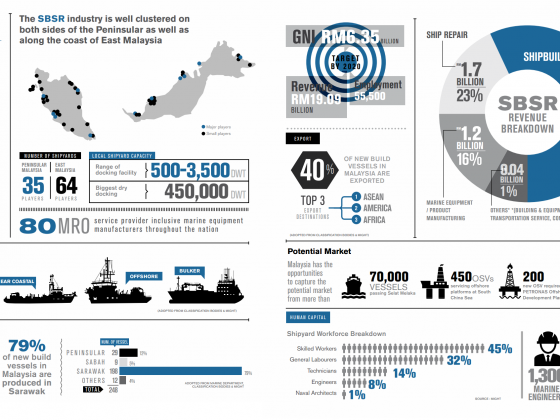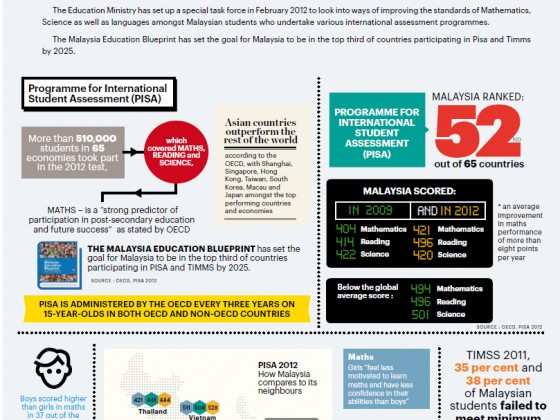by | Kavintheran Thambiratnam and M.S Shahir
Research and development (R&D) is important. If we agree and accept that opinion, then the next step would be the prioritization of its implementations and applications.
Prioritization could differ depending on situation(s) surrounding a particular state/ country/community. Decisions to place prioritization for R&D could be based on a few indicators:
- GINI Ranking, a measurement of wealth distribution. If wealth distribution is uneven then prioritization could be or should be for state funded social programs.
- GDP – Gross Domestic Product. If the GDP is well below critical mass, focus might be applied to low value chain activities to drive the economy.
- Dependency of Export (how insulated the economy is).
Currently, Malaysia is placed 26th in the World Economic Forum competitive ranking and classified as efficiency driven economy. Ours is not an innovation driven economy. We lack behind the developed nations in terms of patent performance. Based on the data for 2009, our patent performance is at 5.7 utility innovation per million (population). This is not surprising since the percentage of GDP for R&D stood at 0.64% of GDP as of year 2006.
Does Malaysia need to increase the percentage? Before the decision is taken, there is a necessity to look at prioritization. Subsidization or expenditure for the educated class (via military industrial complex or grants) should be balanced with subsidization or expenditure for the working class (social programs). The challenge is to increase research output (inclusive innovation and products) without skewing wealth distribution. There is also a perception that the efficiency of patents production (per researchers) is high in Malaysia. According to the World Economic Forum on East Asia Session Summary 2008, ‘China generates an eye-catching number of graduates in high-level science and math; but researchers in Malaysia, while fewer in number, tend to be higher-paid and more productive’.
A manager in an established research institute in Malaysia acknowledged that there are gaps that manifest itself between different parts of the value chain (specific to IT industry) – component suppliers, core product companies, system integrators (SI), and the market itself. System integrators are reluctant to accept new technology and bring it to market, thus continue to maintain the gaps between core technology and Monetisation of Patents and Ideas.
Efforts such as technology grants (MGS, Technofund), matchmaking (IP Connect MDeC – Patents holders meets Industry), Agensi Inovasi Malaysia Commercialisation Lab – Patent holders present their innovation to industry for further development and Universities Commercializing Arm – where universities try to find an industrial match for a particular core technology has produced some results, but the response is rather lethargic. Reason for this ranges from low short term return to, perceived risks involved. In short there are efforts to produce technology but the response from industry and market is less enthusiastic. I partially agree with the gap stated but on the contrary there are takers for application based grants (Cradle Grant). But as of yet there is no analysis on the dynamics of how both of this types of grants is complimenting each other, or to put in another way how independent in nature are they. In hindsight there are room for improvement on working relationship between Universities & Research Institutes with Industry.
Within research institutes or universities themselves, collaborative synergy could be achieved by placing collaboration between different teams as a requirement or Key Performance Index (KPI) for new projects and the burden of proof should be on the principle researcher if he/she wants to pursue the R&D independently. Dr Gopi Kurup, CEO of TM R&D believes collaboration between research groups to pursue R&D goals is not only important but necessary, in comparison when we compare the number of researchers in HUAWEI and ZTE.
Through personal observation, there is a more intangible difficulty on collaboration between Industry and RI’s/University; difficulty arising after the collaboration has been set. This intangible difficulty is the event by event communication between the two parties. Because the function between the two is almost distinct, there is no bridging between the qualms of the researchers and the qualms of the industry:
- Mismatch of expectation: Researchers from RI’s or University have an expectation the method used must be highly efficient (depends on how you define efficiency) and novel, but not necessarily to improve the bottom-line of user-experience.
- Breakdown in (scientific) communication: There must be an understanding of how to measure performance, and for motivational purposes the reason of one method of measurement over another must be clear. Industrial researcher must learn up mathematical form and nomenclature to improve communication and facilitate the transfer of knowledge.
1. Areas of Contention: Once there is a perceive profit to be made from a collaborative effort, then there will be two areas contention of conflict between RI’s/University and Industry, namely IP (Patent) and Profit Sharing especially ones that is derived by the new contented IP (Patent).
How to improve this situation? Like any other problems in communication, empathy goes a long way. Both sides need to understand each other technical qualm and there must be an aggressive step from both parties to understand, to a certain extent, the actual technical/ scientific/mathematical problems. Like any sustainable system there must be a reinforcing agent or vector to move this forward (what I meant by reinforcing agent is not medium term KPI’s like IP but rather how to improve the communication specifically).
Assuming there is no such thing as pure capitalism, Government or GLC with prolocal policies can contribute to the research ecosystem – which is against mainstream neoliberal ideals but almost an absolute rule in the historical development of the first world. In China and Korea, there are percentiles allocated for local technologies to be applied to projects. This must be done tactfully because a foreign technology repackaged by a local company could be misconstrued as local technology. This comes down to governance on how to measure the level of local contribution to that technology.
Digression: supply of researchers to the R&D ecosystem. I believe that an education system that supplies high quality professional does not necessarily supply high quality researchers. This, I believe, is because of the different thought process that a good professional might have as appose to a good researcher. Tendencies are different, and what they reflex to might be different. I leave this to be thought upon by the reader.










